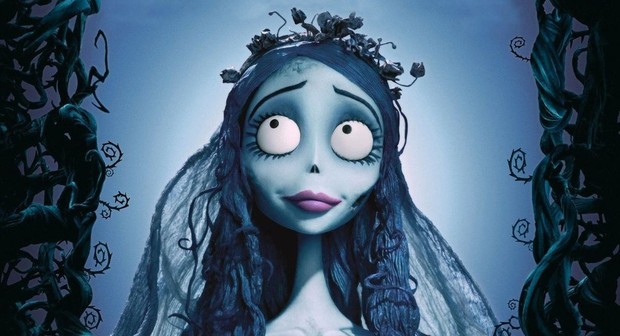“Corpse Bride” (2005): A Gothic Fairy Tale of Love Beyond the Grave
Tim Burton’s Corpse Bride, co-directed with Mike Johnson, is a hauntingly beautiful stop-motion animated film that explores themes of love, death, and redemption. Released in 2005, the film is based on a 19th-century Russian-Jewish folktale and is widely praised for its dark aesthetic, imaginative storytelling, and emotional depth. With Burton’s signature gothic style and Danny Elfman’s haunting score, Corpse Bride has become a beloved cult classic in the realm of animated fantasy.
Set in a dreary, Victorian-era town, the story follows Victor Van Dort (voiced by Johnny Depp), a nervous, shy young man from a wealthy but socially awkward family. Victor is set to marry Victoria Everglot (voiced by Emily Watson), the daughter of an aristocratic family on the brink of financial ruin. Their arranged marriage, meant to serve mutual interests, unexpectedly sparks a genuine connection between the two. However, Victor’s anxiety causes him to fumble during the wedding rehearsal, and he retreats into the woods to practice his vows.

In a twist of fate, Victor unknowingly places the wedding ring on what appears to be a twig but is, in fact, the skeletal finger of a deceased woman named Emily (voiced by Helena Bonham Carter). With that gesture, he inadvertently marries the Corpse Bride, who rises from her grave believing she has found true love. Victor is then swept into the colorful and surprisingly lively Land of the Dead, a stark contrast to the drab and oppressive world of the living.
As Victor navigates this surreal new world, he discovers Emily’s tragic backstory: she was murdered by a man she loved, who stole her dowry and left her buried in the woods. While Emily longs for happiness and closure, Victor must find a way to return to the living world and face the dilemma of choosing between the living bride he barely knows and the corpse bride who offers him understanding and unconditional love.

The film’s animation is a triumph in the stop-motion genre. Using intricate puppets and painstaking frame-by-frame photography, Corpse Bride brings its macabre yet whimsical characters to life with an extraordinary level of detail. The character design, with its elongated limbs and expressive eyes, is unmistakably Burtonesque. The Land of the Dead, ironically vibrant and full of music, contrasts sharply with the cold and joyless world of the living—underscoring the film’s underlying commentary on conformity and emotional repression.
Danny Elfman’s musical score, including songs like “Remains of the Day” and “Tears to Shed,” adds emotional resonance and theatrical flair to the narrative. Elfman, who also voices Bonejangles, infuses the film with both melancholy and humor through his music.
Ultimately, Corpse Bride is more than a spooky love story. It is a tale about letting go, selflessness, and the idea that true love is not about possession but sacrifice. Emily’s final act of letting Victor go so he can live his life with Victoria cements her as a tragic yet noble figure, turning what could have been a horror tale into something deeply moving and poetic.
With its stunning visuals, gothic charm, and poignant storytelling, Corpse Bride remains one of Tim Burton’s most emotionally resonant films—a beautiful meditation on love that transcends even death.

-1752134923-q80.webp)
-1752631912-q80.webp)
-1752549253-q80.webp)